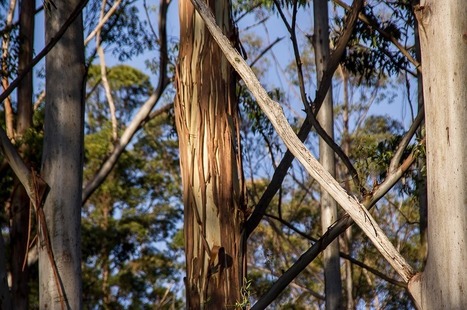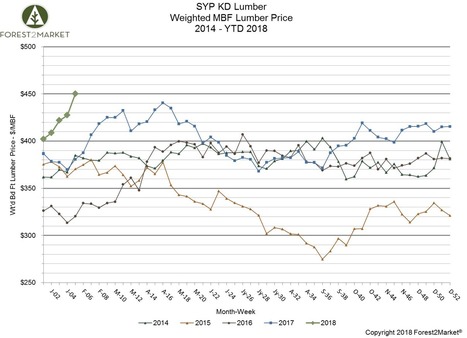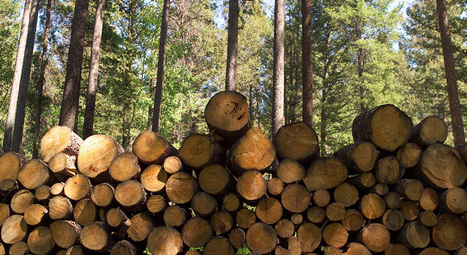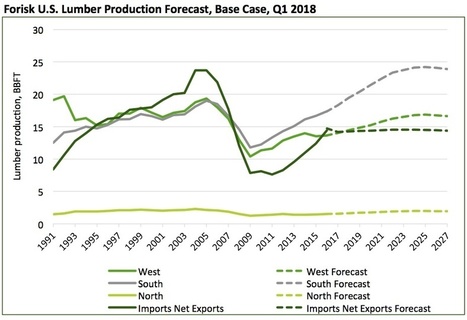British Columbia’s major lumber producers continue to book substantial profits on near record lumber prices almost a year after the U.S. Department of Commerce first hit Canadian producers with punishing duties.
The benchmark price for 1,000 board-feet of top-quality western Canadian two-by-fours hit US$540 about a month ago, according to the trade publication Madison’s Lumber Reporter, compared with US$315 at the start of 2017 before U.S. interests re-ignited the ongoing trade dispute.
Bottlenecks in rail transportation plaguing all industries are one reason lumber prices have spiked so high, but solid demand has also allowed producers to simply pass the price of tariffs along to consumers in prices, said Susan Yurkovich, president of the B.C. Lumber Trade Council.
“Who knows how long these prices will hold, but for now (they are) mitigating the impact of duties for Canadian producers,” said Yurkovich, who is also CEO of the Council of Forest Industries, one of the forestry sector’s main industry groups.
The U.S. Department of Commerce levelled preliminary duties against Canadian lumber producers last April, on the complaint of the U.S. Lumber Coalition following expiry of the last Canada/U.S. Softwood Lumber Agreement.
Final duties were set last fall at between 20.8 per cent and 22.1 per cent, depending on which company it is, and so far, Yurkovich said it is consumers that have felt them the most.
Get Started for FREE
Sign up with Facebook Sign up with X
I don't have a Facebook or a X account

 Your new post is loading... Your new post is loading...
 Your new post is loading... Your new post is loading...
The Molpus Woodlands Group, LLC (Molpus), a timberland investment management organization headquartered in Jackson, Mississippi, has, on behalf of a client, successfully purchased approximately 26,739 acres of timberland in the four southern states of Alabama, Mississippi, North Carolina, and South Carolina.
These historically well-managed timberlands, with broad geographic distribution across four southern states, have been under industrial timberland management for over 75 years, and provide exposure to multiple timber markets that represent the broad spectrum of pulp, paper, lumber, and panel producers located across the southern U.S. Most of the properties have frontage on public roads and provide habitat for a variety of wildlife species, including some of the major game species for the region.
“We look forward to adding additional properties under management in the southern U.S. where we already have a strong presence,” said Ken Sewell, Chief Operating Officer of The Molpus Woodlands Group, LLC. “These properties provide our client with good exposure to areas with long histories of successful commercial timber production, and they offer strong recreational opportunities to the region as well.”
Molpus currently manages approximately 2.1 million acres of timberland investments in eighteen states.
Forest and Wood Products Australia have produced a new report that examines remote controlled and autonomous machinery in forestry. The report was compiled Rien Visser, of the School of Forestry, University of Canterbury, New Zealand. Logging provides some excerpts from the document. Technology development, in terms of both capability and cost-effective integration, is moving at a fast pace. While advanced robotic systems are already commonplace in controlled workspaces such as factories, the use of remote controlled or autonomous machines in more complex environments, such as for forest operations, is in its infancy.
Agriculture and timberlands investor New Forests Asset Management has made an additional equity investment in Malaysia’s Acacia Forest Industries (AFI), which owns a eucalyptus plantation in Sabah, for an undisclosed amount.
The investment in AFI over the next five years will be made through New Forests’ Tropical Asia Forest Fund (TAFF) and comes nearly five years after the fund’s initial investment in the Hijauan Group, whose subsidiary Hijauan Bengkoka Plantations Sdn Bhd (HBP) is a joint shareholder of AFI.
TAFF is a $170-million fund that launched in 2012 as the first forestry fund dedicated to sustainable forestry in Southeast Asia. The fund has since taken equity positions in three forestry businesses in Malaysia, Indonesia, and Laos. These investments include more than 150,000 hectares of land with the target of managing and establishing more than 60,000 hectares of certified plantation forestry. Headquartered in Kota Kinabalu, AFI owns plantations on the Bengkoka Peninsula of northern Sabah. From 2015, it switched from planting primarily Acacia mangium to Eucalyptus pellita, a crop that offers additional market versatility and better resilience to locally prevalent tree diseases.
New Forests said the fresh investments will allow AFI to continue to execute its strategic plans for improving plantation quality and transitioning the company to a higher value sawlog production model.
Through the course of the last year, AP3, the SEK345.2 billion ($42.2 billion) Third Swedish National Pension Fund, scaled back on hedge funds and boosted its internal portfolio construction capabilities. The fund also continued steadily building its alternatives portfolio, where chief investment officer Mårten Lindeborg sees a stronger risk/return ratio than in equity. *** Strong returns from forestry in Sweden, Australia and New Zealand have not been matched by timberland assets in the US and emerging markets. Lindeborg attributes this to emerging-market currency issues.
“We are not that highly exposed to emerging markets, but on aggregate, we have to reconsider and rethink our timber strategy,” he says.
The University of Alaska is negotiating a timber sale on more than 13,000 acres of its land in the Haines Borough. The estimated volume of the 10-year deal is far greater than any timber sale in the Haines area in recent history.
The university’s 13,426 acres are scattered throughout the borough. Most of that acreage is located across the Chilkat and Klehini Rivers or across the Chilkat Inlet from Haines. That includes a piece of land near the Davidson Glacier and a few smaller portions close to town.
The university says it received interest in the timber on its Haines parcels, and is entering into a 10-year negotiated sale. Christine Klein is the chief facilities and lands officer at the university. She spoke at a Facilities and Land Management Committee meeting on Tuesday. *** The sale is estimated at around 100 million board-feet. *** That goal trumps the size of other recent Haines-area timber sales. In 2015, the state Division of Forestry moved forward with the Baby Brown Timber Sale. At 855 acres and 20 million board-feet, it was set to be the largest sale in the Haines State Forest in 20 years. That sale was delayed after a successful appeal of the land use plan. The state is preparing to put it back out to bid.
The Board of Regents approved the development and disposal plan for the university sale at a meeting this week, authorizing it to move forward.
As we get into the swing of a new year, the lumber market continues to feel the collaborative effects that helped drive southern yellow pine (SYP) prices to sustained high levels throughout most of 2017. Forest2Market’s southern yellow pine lumber composite recently hit its highest level ($450/mbf) since we began compiling the data over eight years ago.
Cryptocurrency is making headlines again—this time, in real estate. A pilot program in South Burlington, Vt.—initiated by global blockchain real estate marketplace Propy Inc.—marks the first U.S. deed recorded using only blockchain technology, according to multiple sources. In this case, Ethereum was used to transact and record contracts and documents instead of using the city’s recording system. *** In Sweden, the mapping and land registration authority is moving forward with blockchain technology, using cryptocurrencies to conduct property sales. It expects to complete the first transaction in the next few months, according to the Wall Street Journal. The practice becoming more commonplace overseas may signal to widespread use in U.S. real estate transactions in the near future; however, with volatility and security still at the forefront as major challenges, blockchain needs to make strides to bridge the gap and assuage consumers’ fraud-based fears. 
PingZing's curator insight,
March 21, 2018 12:14 AM
If these blockchain pilot programs prove successful, brokerages may be more willing to transact using cryptocurrency. RE/MAX Action First in Tampa predicts that the technology is set to disrupt the industry and is prepared to embrace the use of cryptocurrency in real estate, stating transactions could be settled in minutes instead of multiple days or weeks. The brokerage is one of the first in Tampa Bay to accept and use cryptocurrency in real estate transactions.
For the past 18 months, Eddie Martin has been trying to find ways to keep the affordable homes he builds, well, affordable.
About 40 percent of the Texas homebuilder’s framing lumber comes from Canada. The Trump administration slapped punitive tariffs on Canadian softwood timber last year, claiming the industry is unfairly subsidized. The move has driven lumber prices to near record highs. Tilson Home Corp., where Martin is president, has so far refrained from passing on the added costs to homebuyers. To do that, it’s cut back the number of home plans it offers and is considering swapping pricier fir for cheaper Southern yellow pine, even though its tendency to bow in the Texas humidity makes it more difficult for construction crews to work with.
“If it stays up and we feel like we need to try and raise the price to try and recoup some of that, it’s very difficult for us as a company,” says Martin, whose business builds about 400 homes a year across the state. “It’s imperative we keep our prices in the range where we can sell the house.”
Framing lumber, including installation costs, accounts for about 18 percent of the average home’s selling price, according to the National Association of Home Builders. The rising price of timber comes at a bad time for U.S. builders, which are already contending with labor shortages and scarce supplies because of summer wildfires that wiped out some timberland in British Columbia. “You’ve got the kind of perfect storm brewing for the homebuilder,” says Jim Barbes, vice president of national sales at 84 Lumber Co., one of the nation’s largest building-supply chains.
On Nov. 2 the U.S. Department of Commerce announced average import duties of 21 percent on shipments of timber from Canada, which supplies more than a quarter of what American builders use each year. The price of one type of lumber futures contract that’s a widely watched industry metric has surged 31 percent in the past 12 months, and it’s trading at the highest level in at least 32 years. “So we’re talking about the potential not just for a record-setting year, but one that is unprecedented,” says David Logan, director of tax and trade policy analysts at the National Association of Home Builders.
The import duties leave companies paying $1,360 more to build a single-family home. Many builders have started to raise their prices to keep profit margins stable, says Bloomberg Intelligence analyst Drew Reading, but their ability to pass on the added costs will be tested as mortgage rates start to rise.
Builders are trying to find as many efficiencies as they can to reduce costs, including changing the design of roof systems, wall panels, and floors to use the least amount of material possible while still meeting building codes, says Barbes of 84 Lumber. They’re also shifting to smaller starter homes with simpler floor plans and multifamily dwellings to save money, he said. The Pennsylvania-based company uses designers who, with the help of software, can calculate the loads to optimize the wood or wood framing while ensuring the quality of the home isn’t compromised, he says.
Taylor Morrison, a Scottsdale, Ariz.-based company that expects to build 8,000 to 8,500 homes a year, is constructing wall panels in factories before they’re shipped to the job site to reduce lumber waste, says Alan Laing, executive vice president of homebuilding operations. Companies such as his will probably start to look to alternative materials like steel and concrete if lumber prices continue on an upward trajectory. “If this is a record year,” he says, “it’ll spawn innovation like anything does when something becomes unaffordable.”
Pistachios and almonds are helping Dallas police and firefighters' retirement accounts these days, but too many other Dallas Police and Fire Pension System investments are paying peanuts — or worse.
The troubled $2.1 billion pension fund over the years sunk hundreds of millions of dollars into unusual investments such as raw land in Idaho, Asian infrastructure, taxis, oil and gas and South African timber.
Untangling those investments — made by previous pension leaders — is now the focus of the new pension board, which has delved into its portfolio in recent meetings. Some of the board members, such as new board Chairman Bill Quinn, were surprised to see just how nuts — he actually said "just crazy" — some of the past decisions appeared to be.
"I've been in the pension business with a lot of funds for a long time," Quinn said. "I just can't imagine how these things ever occurred. It's just mind-boggling that those kind of investments had been made."
Pension leaders say that they know they missed out on much of the bull market of 2017 because the fund wasn't invested enough in traditional equities. Officials said it's going to take several years to work their way out of some of the illiquid investments and move toward a more traditional strategy.
"We have to do it piecemeal," Quinn said. "You can't fire-sale these things. That would be worse. You get the value you can for it."
Until then, they'll deal with the assets they've got, such as:
Another heavy investment in the Hancock Agricultural Investment Group is actually paying off — but it's still not an ideal structure for the pension's leaders. The system fully owns the U.S. assets, which include row crops and apples and nuts. Quinn said such an investment is "a very unusual, strange thing to do." Hancock is reducing the size of the pension's portfolio.
Retired firefighter Sam Friar, who joined the board in 2011 and served as its chairman from 2015 to 2017, said he believes previous boards didn't have enough discipline, nor did they seek sound advice.
"There was really no structure to the investments in the past," Friar said. "It was kind of like somebody would come before the board and give a presentation. And if we liked it, we invested in it.
The Minnesota Department of Natural Resources is boosting the amount of timber harvestable annually from state lands, according to a news release.
Officials said Thursday, March 1, that, based on new data, a harvest of 870,000 cords can be offered for sale annually from DNR-managed forest lands in the next 10 years. The amount represents an 8.75 percent increase in the harvest target from the 800,000 cord sales target for the past 15 years. *** The data driving the DNR to its decision was compiled in an analysis that took more than a year and included discussions with stakeholders and public input. The release stated that in 2016, Gov. Mark Dayton called for an updated assessment on the number of cords harvested to ensure the DNR meets the state's goal of commercial timber production, as well as goals related to wildlife, habitat and biodiversity.
"We had good representation from our stakeholder advisory group from the forest product industry," DNR Commissioner Tom Landwehr said in a teleconference on the subject Thursday. "I think it was across the spectrum from small businesses to the larger mills."
The Minnesota DNR manages 5 million acres of forest lands, amounting to 29 percent of Minnesota's total forest lands. Timber harvesting occurs on 2.75 million acres of those lands that are in state forests and wildlife management areas, as well as school and university trust lands. Logging is a key industry in the Bemidji, Minn., area and for north-central to northeast Minnesota.
The forest lands provide about 30 percent of Minnesota's wood supply for the timber industry, which has a $17.1 billion annual economic impact.
Hunt Forest Products of Ruston and its Canadian partner Tolko Industries will build a $115 million sawmill in LaSalle Parish in the heart of Louisiana timber country.
South Australia, the birthplace of the Australian softwood plantation industry and a leader in forestry innovation, has today been further strengthened with the launch of a new National Institute for Forest Products Innovation hub in Mount Gambier. |
In May of 2011, Forisk published a study that evaluated the viability of the wood-based transportation fuel sector in the U.S. The study detailed 12 technologies and 36 projects that convert wood to fuels including ethanol, butanol, diesel, gasoline, and jet fuel. Forisk’s conclusion of the 2011 study:
About 5,000 acres of forestland near Bonners Ferry will be preserved under a conservation easement in an agreement announced Wednesday by Idaho Department of Lands officials.
U.S. consumption of softwood lumber is likely to reach record-highs by 2030 according to a new study from ForestEdge and Wood Resources International.
One of the region’s state representatives is raising a red flag over state funding being used to the purchase of thousands of acres of private forest land in McKean, Cameron, Potter, Elk, Clinton and Jefferson counties.
From
irei
Molpus Woodlands Group, a timberland investment management organization, has raised $116.4 million for its fifth fund, Molpus Woodlands Fund V, according to a filing with the SEC. The firm did not comment on its fundraising efforts.
From
forisk
Forisk projects U.S. softwood lumber consumption of 49.8 BBFT in 2018. This represents a 3.7% increase from our 2017 forecast of 48.1 BBFT and is 5.4% higher than 2016 actuals of 47.3 BBFT. Softwood lumber consumption increased every year since 2009, but remained 26.4% below the 2005 consumption high of 64.2 BBFT. U.S. softwood lumber production is forecasted to increase 5.0% to 35.6 billion board feet in 2018. The South drives this growth with production expected to rise 6.4% for the year, reaching 19.5 BBFT. This would be a new high for the region, surpassing the 19.0 BBFT of production in 2005. In the Base Case, the South’s share of national lumber production increases 0.8% to 55% in 2018.
With encouragement from federal trade agencies and support from the USDA Forest Service, the National Association of State Foresters has created an open-access clearinghouse for national and state regulations that affect the management of U.S. forests and help to demonstrate the sustainable and legal nature in which U.S. timber is harvested.
From
www
The American government is imposing more anti-dumping duties on Canadian newsprint.
Southern Oregon log prices broke last month’s 25-year record. Stud lumber prices adjusted upward this month, but mills are way below capacity due to shortages of logs and labor. Mortgage rates are up. Recent trends of lumber, logs, home construction, and housing markets, are compared in this month’s timber report. Interpretation and Looking AheadThe price of Lumber has jumped into near-record territory at $410 in response to recent log price increases. Still, studs as reported here lag behind many other solid wood lumber products. Random Lengths Composite Framing Lumber price is $509 this week. Random Lengths also reports that pine lumber from the South is spreading its reach into markets traditionally held by the Midwest and West. This is happening because of the near-record prices and supply shortages for many fir products. One local mill in Roseburg cut back to one shift a month ago due to a shortage of logs. Log prices also continue to rise dramatically, in near-term record territory. For comparison, the January 2017 price of $720 is a more typical high price. Today’s nearly all-time record log and lumber prices, as reported last month, are also still cheap on an inflation-adjusted basis compared to the high prices of the 1990s. Inflation-adjusted to the ’90s prices, the log price today would be $1,522. Logs and lumber, at $892 and $410, are bargains. Housing starts and building permits are also rising; they are more consistently in the 1300’s than recent years. There is considerable pent up demand for more housing, so this trend will likely continue if mortgage rates do not get too high.
The weekly price of mortgages has also continued to rise again this month, reaching 4.40 percent this week, a number not seen since April 2014, and 4.03 percent for the month. Taking a very broad look, mortgage rates have been on a gradual downward trend from a high in 1981 of 18.53 percent to a low of 3.31 percent in 2012. Since 2012, rates have fluctuated between 3.4 and 4.6 percent. Based on the changes in the cost of money and fundamental interest rates, sub-4-percent mortgage interest rates on 30-year fixed rate loans could be history, at least for the near future.
Each year in February, I choose a couple of prior years to compare to the prices of recent months. This year, the two choices are 2005, a traditionally good year, and 2009, which was deep into the Great Recession. In January 2009, studs hit their lowest price for the recession at $137/MBF, and unsold inventory of homes hit its highest level of 19.2 months. In January 2005, housing starts and building permits were over 2 million units — numbers which are unheard of today, and not expected to return any time soon.
Near-term high prices on both the log and lumber side, combined with technology, and despite the reduced volume of production, still create a strong wood products business climate. But the climate could be even better with more supply of wood. Western Oregon’s federal forest lands are under-managed, and the impacts of wildfire are devastating in the woods. It is a shame that more federal timber is not being thinned to mimic and ease the role of fire of our “dry forests” of southwest Oregon, where fire played a significant historical role. This lack of harvest contributes to a log shortage in Oregon. The causes, as previously discussed, are both log supply and labor shortages, long term problems which beg for long term solutions.
Last week, assistant forest director Paul Fiene briefed the county forestry committee on problems with the area logging market.
A new rail spur is now handling inbound freight in North Bend thanks to the collaborative efforts of a tribal entity, a public agency and a private business.
The Province’s Forest Inventory Program will be reviewed to ensure it accurately reflects the changed nature of British Columbia’s forests over the last few years, Forests, Lands, Natural Resource Operations and Rural Development Minister Doug Donaldson announced today.
He made the announcement at the Association of B.C. Forest Professionals Conference.
“We have a robust forest inventory program, but it’s been 10 years since the program was last reviewed, and since that time, we’ve seen significant changes to our forests, most notably from the mountain pine beetle epidemic and wildfires,” Donaldson said. “Having a reliable inventory is important to garner public trust in how we manage our public forests.”
A five-member panel will be conducting the review and submit its report with recommendations, by Sept. 30, 2018.
The panel will examine the forest inventory program model and will provide strategic direction, given changing technologies and the impact of these changes on multiple users. It will explore B.C.’s current forest inventory in depth, and will interview individuals both within and outside government who:
“An accurate forest inventory is essential for forest professionals to make sound decisions to sustainably manage B.C.’s forests. Our members passed a resolution in 2016 asking us to advocate for improved growth and yield data so we are pleased and supportive the government is taking this action,” said Christine Gelowitz, Association of B.C. Forest Professionals’ CEO.
Panel members include Clark Binkley, Bill Bourgeois, Valerie Lemay, Ian Moss and Nick Reynolds. Each member brings a unique perspective – from education and research, to First Nations engagement, user requirements, use evaluation and information collection. |



































